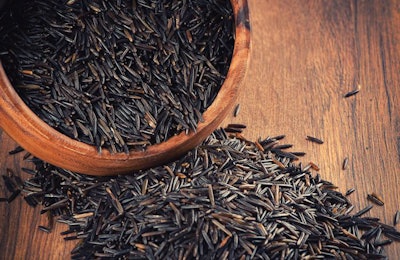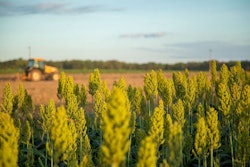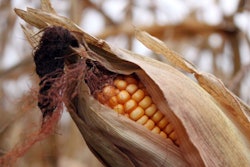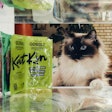
In a Packaged Facts survey, United States pet owners didn’t consider brown rice to be a good pet food ingredient at higher rates than both corn and wheat. During his session at Petfood Forum 2018, David Sprinkle, publisher and research director at Packaged Facts, discussed the results of his company’s 2018 survey of US pet owners conducted in January and February of 2018.
Packaged Facts survey results about pet food ingredients
Seventeen percent of survey respondents strongly disagreed with the statement that “for the pet foods I buy brown rice is a good ingredient,” and 37 percent somewhat disagreed, while only three percent strongly agreed and six percent somewhat agreed.
Corn had a nearly opposite spread of opinions. For corn, 13 percent strongly agreed and 24 percent somewhat agreed that the grain was a good ingredient, compared to 8 percent strongly disagreeing and 18 percent somewhat disagreeing.
Pet owners seemed more on the fence about wheat. Forty-one percent neither agreed nor disagreed that it was a good ingredient. Wheat was strongly considered a good ingredient by 10 percent, while 10 percent strongly disagreed that it was. Likewise, 20 percent somewhat disagreed and 19 percent somewhat agreed.
Corn as an ancient grain in pet food
The Packaged Facts survey results stand in contrast to the trend away from corn. In Nielsen’s 2017 Category Shoppers Fundamentals Survey, 7.8 percent of respondents stated that they didn’t want corn in their pets’ food. However, the type of corn may play a role in consumers’ opinion.
“I think corn is going to be the next ancient grain,” said Sprinkle.
Sprinkle believes heirloom varieties of corn may be accepted as novel pet food ingredients. In particular, he pointed out purple corn. He noted that purple corn could be marketed as a functional ingredient since it contains higher levels of antioxidants that blueberries.
Purple corn is a variety of blue flint corn (Zea mays indurate). Purple corn has higher levels of protein than yellow dent corn, the most common variety grown as a commodity in the US. Purple corn traditionally is eaten in Ecuador, Peru and Bolivia.














